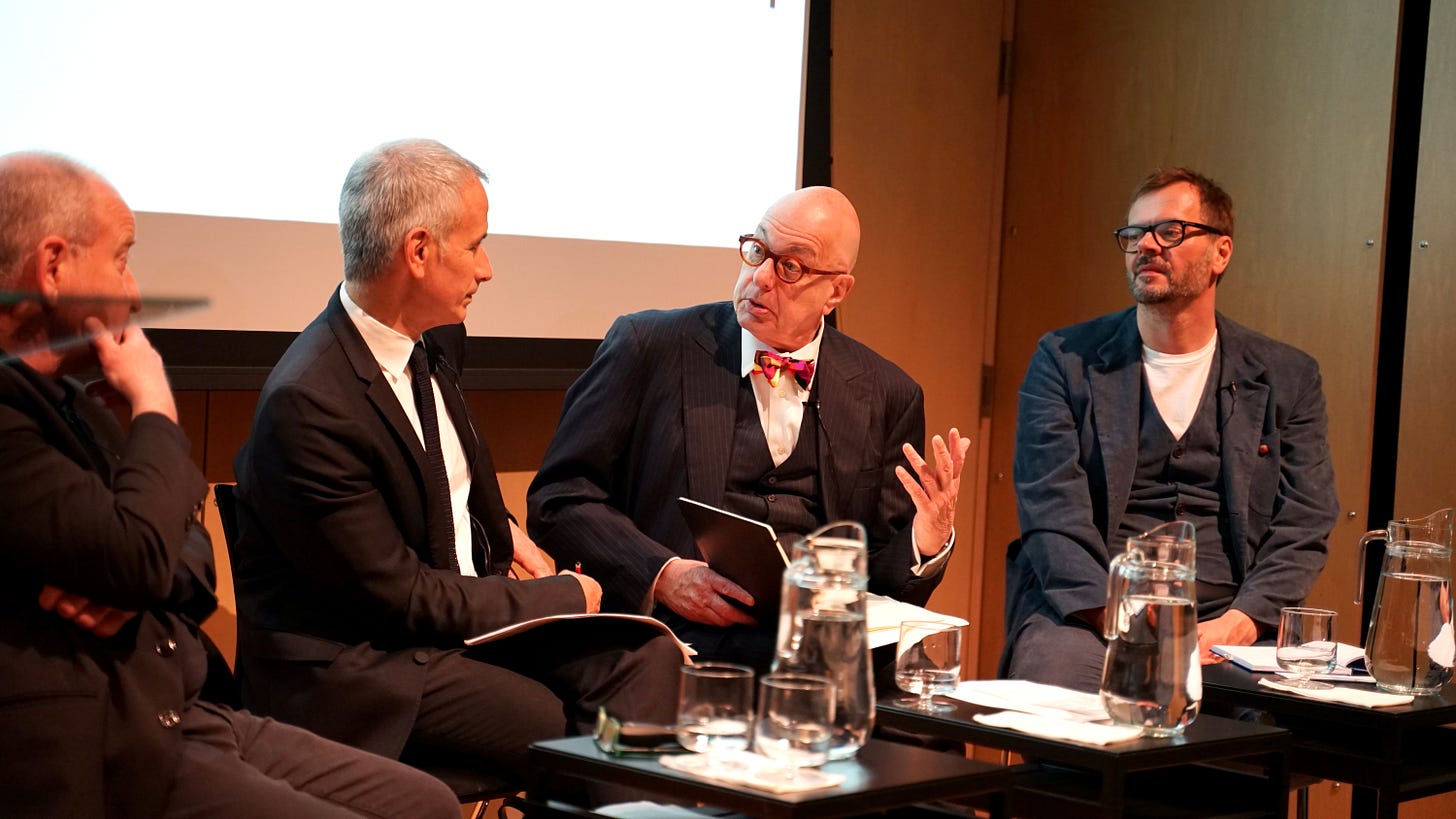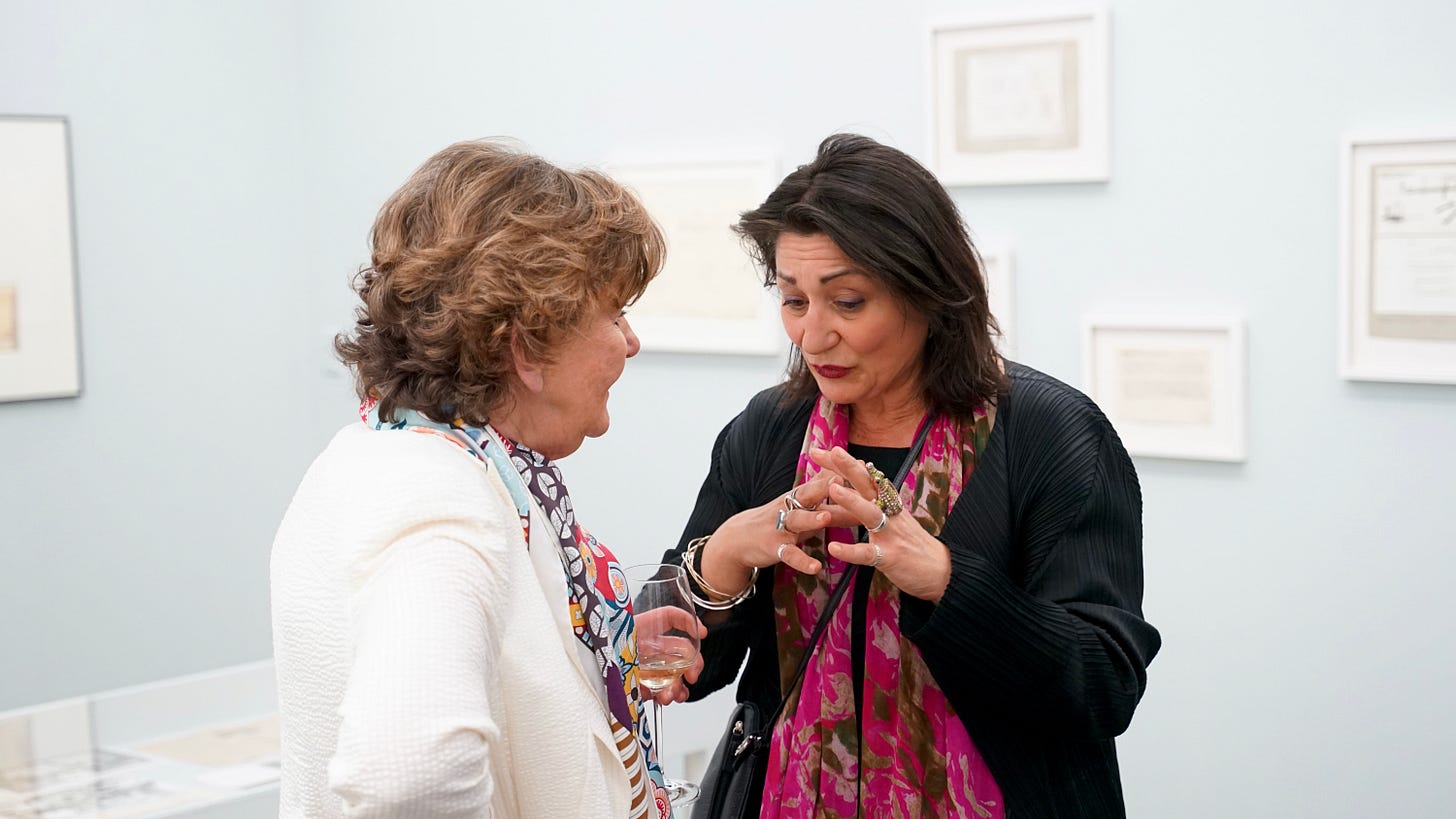
Say you want to catch a fish.
You don’t own a fishing pole and only have a net because that’s how your grandfather taught you to do it (don’t ask me why; he just likes it that way). You don’t fish a lot, so you prepare all week. You watch some YouTube videos to brush up on technique, clear your calendar for the big day, research the best place to catch what you want, and, if you’re lucky enough to have a boat, you fill up its gas tank.
When it’s time, you suit up, load your gear into the trunk, and drive to the water. You get out of the car with a big smile that says, “I have no idea what I’m doing, but I’m glad I’m going to try.”
You cast, or, as the case may be, submerge your net. Maybe it’s a wide net. But as wide as it is, it can only occupy so much area. And there are only so many types of fish that could be in that area. You tug, wiggle, and troll, hoping to get a nibble. But you won’t get a nibble because you’re not using a fishing pole with hooks. So you have to look for movement. You try to see into the water, but it’s a bit murky, so you kind of intuit the fish. You wait until you finally feel movement. And there it is. You lug up your net and behold a lovely little bluegill. But you were hoping for a bass. You were hoping for dinner.
Before now, you were at the mercy of fate and the fish. Now you have the advantage. The fish is out of the water and gasping for breath. You can now decide to keep it or throw it back. The fish doesn’t know what you’re thinking of doing, though, because it’s a fish. It’s just trying to survive. You figure the modest thrill of catching it was enough, so you throw it back. You dip your net back into the water and wait for food. Now you’ve got slime and mud on your hands.
This is the metaphor that came to mind when I started to parse that spiky, electric-shock-like, digital-sounding word “network.” We hear it a lot in the context of making a career for yourself. If you want to get a job, you’ve got to work the net. Capture and use people who can help you, discard those who can’t.
But when I looked up the word in OED, I was surprised to learn that fishing didn’t figure in its etymology. Something much more beautiful did, something that has nothing to do with nets or any other tools, or working.
The earliest known use of “network” as a verb is from the 1840s, in a poem by Robert Browning. Browning writes in “The Englishman in Italy,” the speaker addressing his companion, the girl Fortù:
Time for rain! for your long hot dry Autumn
Had net-worked with brown
The white skin of each grape on the bunches...
A networked grape. What a perfect, gorgeous image. Brown trails of ripeness gently engraved by the dry autumn air. Natural, random. A sustaining fruit. Fresh. The potential for wine, for intoxication. Connections between the brown lines arising where you least expect them. The connotation is more about the creation of latticework, a patterning on the grape, than about what is captured or filtered through a material, as with a fishing net. I love this solidly aesthetic sense of “to network.”
Eventually, the verb came to mean “connect,” as when speaking about railroads in the 1880s or trolley routes in the 1910s. Calculated connection. Precise placement. Stringency. Exploited immigrant labor. Then, with the advent of television, networking meant broadcasting: to project a show onto the connecting fabric of boob tubes across the country. Entertainment. Performance. Fakeness. More exploitation. Monotony. Mind-numbing.
The original sense, with its artistic “to pattern,” is already getting lost.
The aesthetic sense of “network” was done away with completely when the word took on a new meaning in the 1980s. Correlating with the rise of the yuppie—the ambitious, educated, cocaine-fueled young man who moves to a big city to start his career—“network” started to take on a sense of selfishness and quid-pro-quo-ness. The new definition that arose around this time squeezed all remaining innocence out of the word: “The action or process of making use of a network of people for the exchange of information, etc., or for professional or other advantage.” Instead of appreciating a web of people or things on its own terms, networking became about using that web to one’s advantage.
Thusly it persists to this day: A network is a tool. And even though networking is “work,” it’s unpaid. It seems to pretend to be casual and fun, but for a lot of people it’s stressful and exhausting; if you do it a lot, it could feel like a job. Unpaid pre-work for work that may never come.
And it feels slimy. That’s why a lot of people don’t like to do it. A 2016 study published in the Harvard Business Review cited “executives, other professionals, and MBA students” who said networking made them feel “phony” and “dirty” because it’s “exploitative” and “inauthentic.” The authors asked 306 professionals to write about times they networked for work or socially and then fill in blanks between some letters: W _ _ H, S H _ _ E R, and S _ _ P.1 The participants who wrote about professional networking wrote “wash,” “soap,” and “shower” twice as frequently as the ones who wrote about social networking.
For some, then, networking is literally disgusting.
For others, like first-generation college students, it can be impossible. Limited access to influential people and the need to code switch were only two of many barriers that a 2022 HBR article called “networking paradoxes.” Paradoxical in the sense that even though everyone seems to agree that DEI is important and that you should be free to be yourself at work, still, no matter how much you emulate your more advantaged peers, you will likely find yourself struggling to land a job.
Networking: both a pain and a privilege.
On top of it all, unless you’ve got daddy setting you up with his corporate executive friends, the burden is always placed on the individual to overcome both the nausea and fear, and the systemic roadblocks, to just get a good-paying job.
But what if the burden wasn’t on the individual? What if it was on the state? What if a society—a city, say—made networking natural? Like those grapes in autumn, whose imperfections in the form of latticework arrive naturally. And yet whose brown patterns signal ripeness—the apogee, the fullest stage, of a fruit’s life cycle. Real progress. Real, fresh, advanced growth. Networking wouldn’t be a separate mode of behavior that you would have to practice for. It would just be what everyone does. Everything would be networking because everyone would be connected. Maybe it could even treat America’s loneliness epidemic. We might even be able to do away with the word.
Utopian? I think not.

The case for rethinking what it means to network has been made before, especially, recently, in the context of art, culture, and brilliant ideas. Here, the importance of collaboration and networking has historically been suppressed in favor of the notion of the solitary genius. This suppression, of course, is a direct result of the word “network’s” emphasis on labor and capitalist exploitation, which art and culture are seen as fundamentally opposed to, or at least an escape from.
Sociologist Howard Becker’s 1982 book, Art Worlds, for example, theorizes that art is made by networks of people and depends partly on the state’s intervention in those networks for its life or death. (In-vogue English professor Dan Sinykin recently made a similar case—a dismal one—regarding book publishing in his study, Big Fiction: How Conglomeration Changed the Publishing Industry and American Literature.) “The state…acts like other art world participants,” Becker writes, “providing opportunities to get art work done by giving support both directly and indirectly for what it approves of, and acting as a constraint on other activities by preventing access... In this sense, all artists depend on the state and their work embodies that dependence.” By broadening the focus of networking from the individual to the culture, and how it interacts with the state, Becker harks back to the original artistic connotation of “network” as “to pattern” or “to make into a latticework.” A web of mutual cooperation. Albeit with the caveat that the state holds power and can choose at any time to pull out of its side of the bargain.
And then there’s computer scientist Alex Pentland, who’s not so much interested in art as he is in intelligence. In his 2014 book, Social Physics: How Good Ideas Spread—The Lessons from a New Science, Pentland takes a more personal, humanistic tone than Becker does. “It is not simply the brightest who have the best ideas,” he writes, “it is those who are best at harvesting ideas from others.” He continues, “It is not only the determined who drive change; it is those who most fully engage with like-minded people.” The image of the lone genius whose ideas seem to arise sui generis (or is it ex nihilo?) and who doesn’t need anyone’s help is rendered a myth. The best ideas come from hanging out with people—and not just, I would argue, like-minded ones—who stimulate them. Sounds banal, but it’s taken for granted.
Like Jane Jacobs, in her landmark The Death and Life of Great American Cities, Pentland’s numbers-driven research envisions broad reforms for society that would make it easier for us to exchange ideas simply by going out and meeting people. He contrasts “traditional theories of city growth,” which advocate “specialization in industry or new categories of highly trained workers as generative models of city development,” with his “social physics” approach, which eschews specialization and embraces a diffuse, natural flow of ideas among people with different skills, interests, and specialties. What we want, according to Pentland, is “self-contained towns in which people meet each other regularly and there are many friends of friends.” Like grapes in autumn. Or Bushwick.
Using contemporary Zurich as an example, Pentland argues that the most creative cities maximize opportunities for exploration with cheap, efficient transportation. Detroit, he notes, is the latest city trying to create a rich cultural core smack in the middle, with the hopes that the renewal radiates outward. Recent reports attest to the city’s success.
So it’s not utopian after all. Many great cities have succeeded in generating creativity by mashing different people together and connecting them. Besides Detroit, Pentland mentions Paris, London, New York, and Boston. But today, when we are more isolated than ever, and when our screens put us in an echo chamber of thought to the point that we don’t even know our neighbors, there is a case to be made for cities taking a more active role in getting people out and talking. It doesn’t just happen anymore. Otherwise, cities might cease to be where creativity happens, a possibility entertained by Marin Kosut in her recent book Art Monster: On The Impossibility of New York. As a model for how to generate genius out of networking, we might look to the one city that is conspicuously missing from Pentland’s study: Vienna.
Up until 1918, Vienna was the capital of the thousand-year-old Hapsburg Empire. There was no “Austria” then—only “Austria-Hungary,” a Janus-faced beast of territory whose dualism created a perpetual identity crisis for inhabitants across the empire. As Robert Musil put it in his The Man Without Qualities, the gargantuan novel of ideas that every Viennaphile must read: “This sense of the Austro-Hungarian state was so oddly put together that it must seem almost hopeless to explain it to anyone who has not experienced it himself.” People simply opted to call themselves Czechs, Poles, or Serbs, etc. When the Polish side of my family came to America in 1901 from the towns of Poraż and Borków, their birthplaces are marked as “Galicia,” “Austria,” or even sometimes “Polish Russia” on various travel documents and censuses. It was a mess.
For the better part of a millennium, Vienna was the most important European cultural center East of Berlin and west of St. Petersburg. When you first visit, as I did two years ago, it can feel like you’ve entered a time capsule. Medieval, baroque, imperial, and modern architecture surround you. The Danube flows through the middle. The Ringstrasse curriers you around the perimeter. There’s a reason why Vienna waits for you in Billy Joel’s song. It’s slow and sleepy. That’s why Ethan Hawke and Julie Delpy, in Before Sunrise, can spend a mere twelve hours galavanting around and seem to pretty much cover everything. If the film was set in New York, they would have wasted too much time waiting for the subway and stopping at crosswalks. Paris would’ve just been too big.
Vienna’s cliches are irresistible: cafe culture, the Sachertorte, the waltz, Mozart, trams. It’s variously termed “The City of Dreams,” for psychoanalysis, and “The City of Music,” for Haydn, Mozart, Beethoven, as well as their twentieth century heirs headed by Schoenberg. Well-read visitor-aesthetes drool, as I do, thinking about all the new art and ideas that were pressure-cooked here especially at the turn of the twentieth century: Freud, Klimt, Kraus, Kokoschka, Schnitzler, Hofmannsthal, Rilke, Zweig, Berg, Webern, Gustav and Alma Mahler, Musil, Mach, oh my!2
The remarkable thing is that a ton of these people knew each other. You may have heard of the famous exercise of the imagination which invites you to consider that, a bit later, Stalin, Trotsky, Hitler, Tito, and Freud all frequented the same or nearby cafes. It’s held up as an example of how cross-pollinating the city was. Everyone went to cafes, where they exchanged ideas. That’s how the typical story goes.
But this past May, a two-day conference at the Austrian Cultural Forum in Manhattan suggested that this is only part of the story.
Why was there so much culture in Vienna? Why was there so much genius? In the next three parts of this series on “Vienna: City of Circles,” I’m going to write about the four reasons why there was so much genius in Vienna around 1900, according to the findings presented at this conference and my own research.
To wet your whistle, here are the four reasons: Vienna’s university stressed cross-disciplinary study; intellectual activity took place mainly in public (cafes and salons); Vienna was, in contrast to other major European cities, a city of immigrants, which made the diversity of opinions especially huge; and the layout of the city encouraged intermingling.
Think of this series as Jane Jacobs meets Claire Dederer. The intersection of city planning and literary criticism, for all you grad students.
A lot of writers are rethinking whether genius even exists. Dederer’s Monsters: A Fan’s Dilemma is the most recent and popular example in book form, but you can find articles everywhere about “The Destructive Myth of Universal Genius,” “The Myth of the Artistic Genius,” and, “A Bullshit Genius.” The consensus seems to be that genius doesn’t exist. Or, if it does, then it’s a product of a lot of people and isn’t innate to any individual. Sure, behind each individual genius there is a phalanx of assistants, collaborators, and muses. But how did all these people find each other in the first place?
Behind every cadre of “genius supporters” is a place that gives rise to the conditions that make collaboration possible. The most important condition of all is the ability to network. If we’ve got that, then we can all become grapes in autumn.
There is an explanation in the article about how these incomplete words aren’t suggestive (although it appears that way) and are based in a legitimate methodology.
With the exception of Alma Mahler, all of these people are men, a cultural problem I’ll cover in a future installment in this series.



